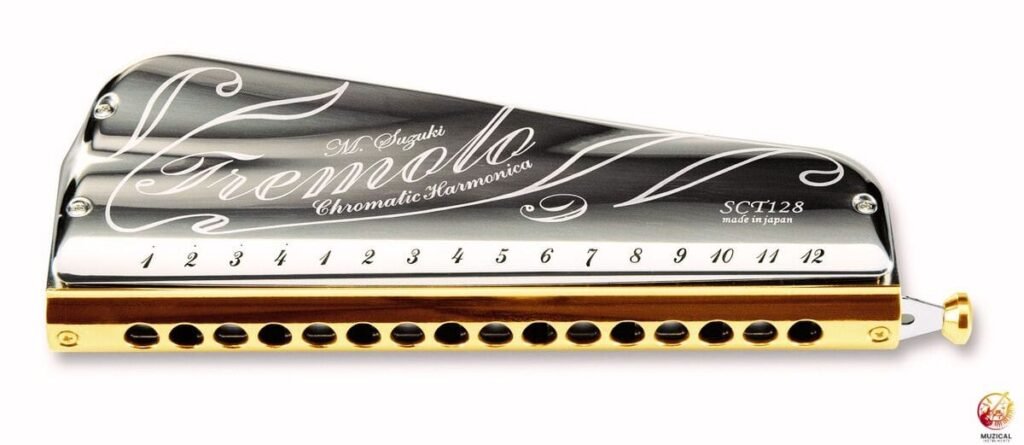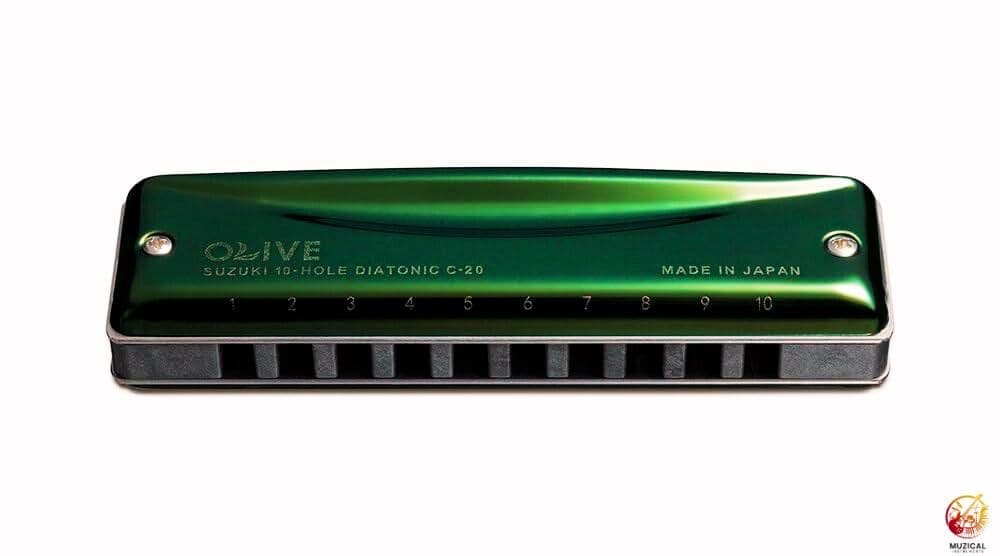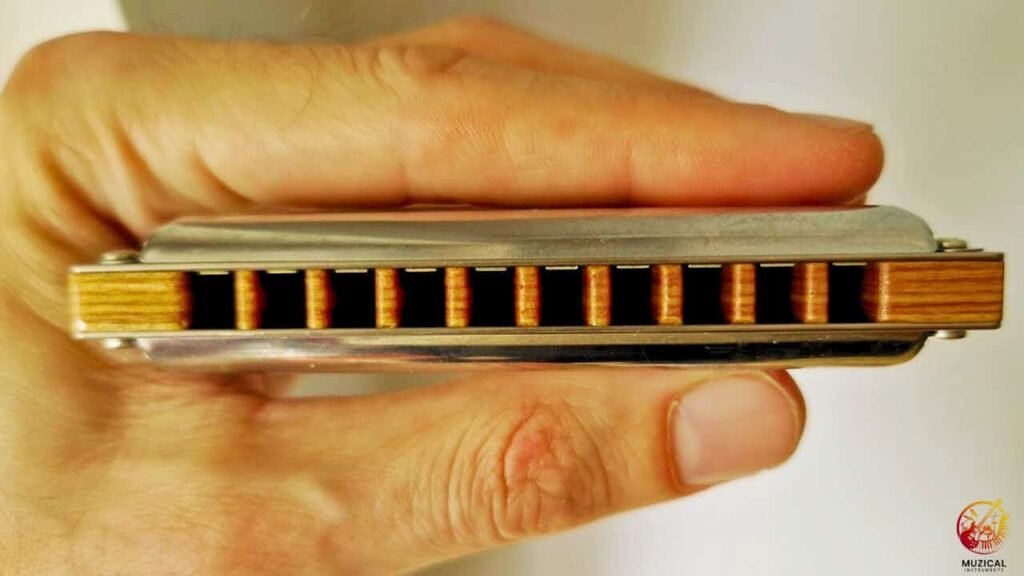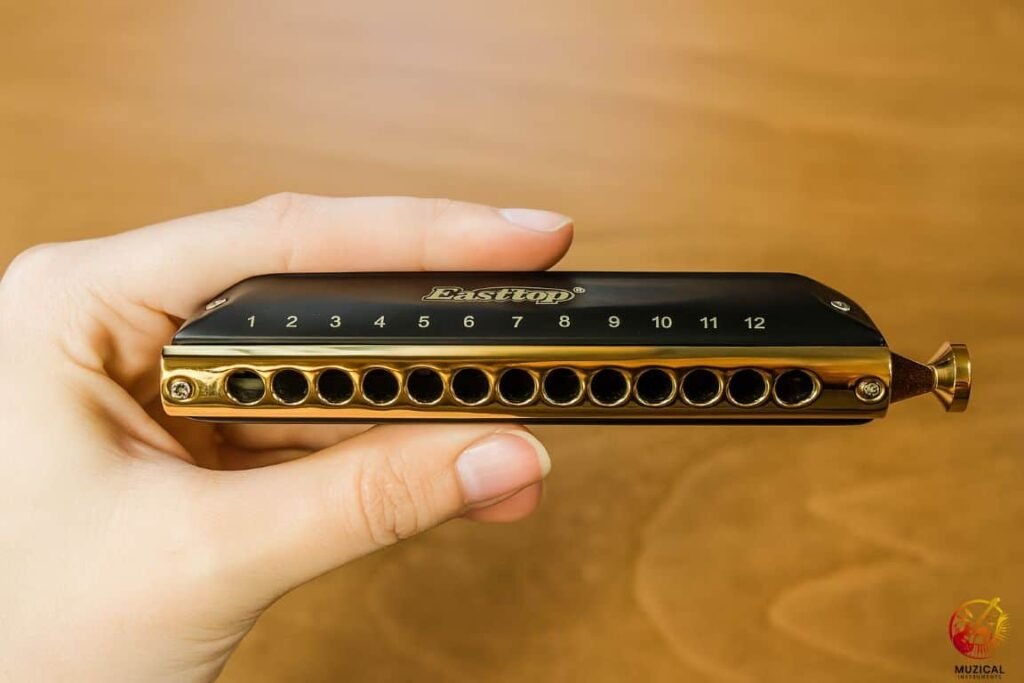Is a Chromatic Harmonica Better Than a Diatonic? A Musician’s Guide
If you’re looking at these two different kinds of harmonicas, you’ve probably asked yourself the big question: is a chromatic harmonica better than a diatonic? It’s a perfectly normal thing to wonder, but the answer is that one isn’t “better” , they’re just built for totally different jobs.
The diatonic harmonica has that raw, gritty, soulful sound that feels right at home in a blues bar or a folk song.
The chromatic, on the other hand, is the smooth, polished voice you hear playing beautiful melodies in jazz, pop songs, and even movie soundtracks.
Don’t worry, we’re going to clear everything up for you. We’ll look at what makes them tick, which one is friendlier for a beginner to pick up, and most importantly, which one is right for the music you actually want to play.
By the time you’re done here, you’ll know exactly which harmonica is calling your name.
What’s the Real Difference in How They Work?
They might look the same on the outside, but inside, they are very different. The biggest difference is the notes they play. A normal diatonic harmonica is built to play in only one key, like the key of C. Think of it like a small piano that only has the white keys. This makes it perfect for playing simple tunes and chords you hear in folk and rock music. It’s made to sound good for that style without a lot of work.

The chromatic harmonica is different. It can play every single note. It’s like having a piano with all the black and white keys. It can do this because of a button on the side called a slider. When you press the slider, the note gets a little higher. This button lets you play any song in any key.

So, the diatonic is a specialist for certain music, and the chromatic can play anything. This one big difference changes how you learn and what you can play.
Which Harmonica Is Easier for a Beginner?
This is a tough question because “easy” can mean two different things. For getting started right away, most people would say the diatonic harmonica is easier. You can pick it up, breathe in and out, and it makes a nice chord sound. You can be playing a simple tune in just a few minutes, which feels great!
But that early success is a bit tricky. To get that cool, wailing blues sound, you have to learn a hard skill called note bending. This is where you change your mouth shape and your breath to make the note’s sound bend down. It’s how you play the “missing” notes on the harp. Learning to do this well takes a lot of practice and can be frustrating.
The chromatic harmonica is harder at the very beginning. You have to learn to play clean, single notes and use the slider button. But once you learn that, getting better is more straightforward. You don’t need to learn hard mouth tricks to get all the notes; you just push a button.
So, the diatonic is easy to start but hard to master. The chromatic is harder at first, but the learning path is smoother.
Pro Tip: Your First Harmonica
If you aren’t sure which to get, start with a diatonic harmonica in the key of C. A good one from a brand like Hohner or Lee Oskar only costs about $40. It’s a great way to learn the basics without spending a lot of money. If you later wish you could play more complicated songs, you’ll know it’s time to think about a chromatic.
Is a Chromatic Harmonica Better Than a Diatonic for Playing Any Song?
When you want to play any song that pops into your head, the chromatic is the clear winner. A diatonic harmonica is made for just one key. If a song is simple and stays in that key, it works great. For example, a C harmonica is perfect for “Twinkle, Twinkle, Little Star.” But what if a song has a note that’s not in the key of C?
On a chromatic, you just push the slider button. On a diatonic, you’re stuck. Only a true expert who has mastered a very hard skill called overblowing can get those notes out.
This is why many diatonic players own a whole bunch of them. They need a different harmonica for different keys. If their band plays a song in the key of G, they have to grab their G harp. A serious blues player might have a whole case full of them! A chromatic player only needs one. So, when thinking about is a chromatic harmonica better than a diatonic for freedom, the chromatic wins by a mile.
Diatonic vs. Chromatic: A Simple Look
| Feature | Diatonic Harmonica (“Blues Harp”) | Chromatic Harmonica |
|---|---|---|
| Notes It Plays | Notes from just one scale (like C) | All 12 notes (like a piano) |
| Special Part | None | A slider button on the side |
| Main Skill to Learn | Bending notes, playing chords | Playing single notes, using the slider |
| Best Music For It | Blues, Folk, Rock, Country | Jazz, Pop, Classical, Movie Music |
| How It Feels to Learn | Easy at first, then gets hard | Harder at first, then gets easier |
| Cost | Cheaper (about $40 each) | Costs More (starts around $150) |
What Music Sounds Best on Each Harmonica?
Your choice should really come down to the kind of music you love. Each harmonica has a special sound that fits certain styles.

The diatonic harmonica is often called a “blues harp” because it’s a huge part of blues music. That raw, powerful sound you hear from blues legends like Little Walter or in folk songs by Bob Dylan comes from a diatonic. It’s also used in country and rock music. Because it can play chords easily, it sounds full and is great for playing along with a guitar. If you love these earthy sounds, the diatonic is for you.

The chromatic harmonica has a smoother, clearer sound that is perfect for more complex music. It became a real jazz instrument in the hands of players like Toots Thielemans. He could play it as fast and beautifully as a saxophone. You can also hear it in pop songs by stars like Stevie Wonder. Because it can play any melody, it’s great for movie themes and classical music. If you want to play all kinds of melodies, you need a chromatic.
Expert Insight: What’s “Cross Harp?”
Blues players have a cool trick called “cross harp.” This is when they use a harmonica in a different key from the song they are playing. For example, they use a C harmonica to play a song in the key of G. Doing this makes it much easier to bend the notes to get that classic, sad blues sound. It’s a key part of playing the blues!
Why Does a Chromatic Harmonica Cost So Much More?
You will see a big price difference between these two. Diatonic harmonicas are much cheaper to buy one at a time. You can get a great one for about $40. The only thing is, you will need more than one to be able to play in different keys. Many players end up buying a whole set, which can add up.
Chromatic harmonicas cost more from the start. A good one for a beginner will be at least $150. They cost more because they are harder to make. They have more parts, including the slider, and tiny plastic flaps called windsavers that stop air from leaking. All those extra parts mean they cost more to build.
But remember, you only need to buy one chromatic harmonica to play in any key. So you pay more at the beginning, but it might be cheaper in the long run than buying a dozen diatonics.
So, Is a Chromatic Harmonica Better Than a Diatonic?
At the end of the day, there is no single right answer to “is a chromatic harmonica better than a diatonic?” The real question to ask is, “Which harmonica is better for the music I want to play?“
If you want to play raw blues, simple folk songs, or rock and roll, the diatonic harmonica is your best choice. It’s cheap to get started, and it will give you that classic sound you’re looking for.
But if you dream of playing smooth jazz, pretty pop melodies, or any song you can think of, then the chromatic harmonica is the way to go. The higher cost is worth it for an instrument that can do almost anything.
Go online and listen to songs by Little Walter (diatonic), then listen to Toots Thielemans (chromatic). Hear the difference between Bob Dylan and Stevie Wonder.
Which sound do you like more? Let your ears help you decide.
FAQ: Is a Chromatic Harmonica Better Than a Diatonic?
1. What key of harmonica should I buy first?
For a diatonic harmonica, you should almost always start with the key of C. It’s the most common key and perfect for learning on. A chromatic harmonica also comes in the key of C, but its slider lets you play in all the other keys, too.
2. Can I play blues music on a chromatic harmonica?
Yes, you definitely can! Greats like Stevie Wonder played incredible blues on a chromatic. It will just have a smoother, cleaner sound. You won’t get that same raw, gritty sound that comes from note bending on a diatonic “blues harp.”
3. Do I need to read sheet music to play the harmonica?
Nope! Many famous harmonica players learned completely by ear. You can also use harmonica tablature (tabs), which are super simple charts that use numbers and arrows to show you exactly which hole to play.
4. Why do some players carry a whole case full of harmonicas?
Those are diatonic players. Because each diatonic harmonica is locked into a single key, they need to carry many different ones so they can play along with songs in any key the band chooses.
5. Which harmonica is better for a kid?
A diatonic harmonica in the key of C is a great choice for a child. They are less expensive, very durable, and make a fun sound right out of the box, which helps keep kids excited about playing.
6. How long does it take to learn harmonica?
You can learn to play a basic song in just a day! Like any instrument, getting really good takes practice. But if you play for just 15 minutes every day, you’ll be amazed at how much you’ve learned in just a few weeks.
